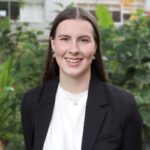C072/2012
Curtin University has welcomed one of the world’s leading researchers studying organic matter in stalagmites.
Dr Alison Blyth is also the sole 2011 recipient of an Australian Institute of Nuclear Science and Engineering (AINSE) Research Fellowship. Awarded from open competition internationally, the prestigious Fellowship will keep Dr Blyth at the University for three to five years.
During this time Dr Blyth will build on research begun during her PhD studies in Organic Geochemistry at Newcastle University (UK).
Dr Blyth said she uses analysis of stalagmites to create new records of past environments.
“My current work includes the creation of a new paleo-thermometer to measure past temperatures, as well an examination of changes in vegetation and soil over time, including how they interacted with climatic change,” she said.
By combining techniques from these two areas in the study of stalagmites, Dr Blyth can formulate records for temperature, rainfall and vegetation that span thousands of years, providing insight into how climate shifts affected life on the planet.
Her paleo-thermometer in particular is a unique and potentially invaluable tool.
“There are relatively few ways of measuring past temperatures on land,” Dr Blyth said.
“Most of the temperature records we have come from ice cores, which provide global atmospheric temperature; or they come from ocean cores, which provide sea surface temperature.
“Because I’m working in caves, I get a regional temperature signal, a terrestrial signal from the living ecosystem.”
“By looking at the behaviour of past climates and their effects on past ecosystems, we can put new and better data into models predicting future climate change and variations.”
Dr Blyth’s stalagmites are sourced from around the world, including samples from the Nullarbor Plain formed millions of years ago.
Dr Blyth is supported and hosted by Curtin’s WA Organic and Isotope Geochemistry Centre, under the leadership of Professor Kliti Grice, and the Department of Chemistry and WA School of Mines.
In addition to her PhD from Newcastle University, Dr Blyth has undertaken post-doctoral fellowships at the University of Cambridge and The Open University (UK).
Contact:
Rob Payne, Public Relations, Curtin University
Tel: 08 9266 4241, Email: rob.payne@curtin.edu.au


